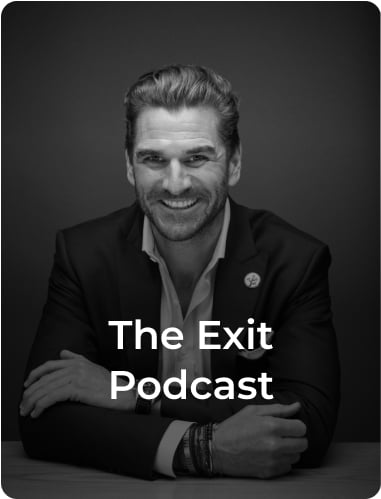
For years Shopify was just another monthly subscription-based eCommerce platform. Popular for sure, but with a pretty vanilla, straight-forward SaaS business model.
Like any other SaaS business, a user (in this case, a merchant) would sign up and if it stayed, then Shopify collected a monthly fee. It was tiered with Shopify Plus, but what really changed the game was the introduction of Shop Pay in 2017.
Shop Pay added an entirely other business model to Shopify based on GMV and payments. Defined as Merchant Solutions, it includes things like capital and developer app fees with payments as the largest driver by far. This new layer of the business model has completely eclipsed Shopify’s traditional business, as seen in the company’s 2021 annual report.
Shop Pay has been a big accelerant for Shopify’s growth. The cumulative GMV for Shop Pay and accelerated checkout crossed the $50 billion mark in Q1 2022.What’s more, the growth of the Merchant Solutions business overall is now double that of Shopify’s subscriptions revenue. This is important to note as it means that Shopify has become a GMV-focused company much more than a monthly subscription company.
This is likely to tend to shift the focus over time from “all merchants” to “growth merchants,” despite Shopify’s entrepreneurial roots. (This, ironically, makes Shopify Plus more important in the long-term, despite the company’s lack of relative focus on it – but that’s a discussion for another time.)
With its acquisition of Deliverr, Shopify added another new revenue stream to its business model: Parcels. While the Shopify Fulfillment Network was launched in 2019, it never gained much traction among Shopify merchants thanks to the pandemic. The acquisition of Deliverr gives Shopify a true asset-light logistics network.
As interesting as it is to follow Deliverr, this is not Shopify’s first acquisition in the fulfillment space. Its previous acquisition of 6 River Systems provided the company with robotics assets in addition to a proprietary warehouse management system it was building. Shopify has built its own facility in Georgia aimed at small merchants selling less than 1,000 items per month.
Shopify’s new entity called Shopify Logistics contains 6 River Systems, Shopify Fulfillment Network, and now Deliverr. It’s worth noting that this business is led by Aaron Brown, who (surprisingly) never has led a logistics enterprise despite being a former Amazoner.
Shopify added Deliverr to its Shopify Fulfillment Network capabilities to offer brands simplified logistics management with demand-driven inventory placement to ensure reliable two-day or one-day shipping. This essentially is the anti-Amazon, aiming to help brands use an independent and flexible solution.
What Does This Mean For the Merchant?
The battle between Shopify and Amazon is an interesting situation. Amazon has Amazon Pay, which is part of Buy with Prime on a third-party website (in beta, as of this writing). Amazon’s solution is dependent on the third-party seller using Fulfillment By Amazon.
Of course, Shopify requires merchants to use Shop Pay as part of the Shop Promise solution. It also seems like it will require merchants to use Shopify Fulfillment Network.
If you are a direct-to-consumer merchant, this could make your life more complicated in the future if Shop Promise takes off. In the past, fulfillment was often in the background. Where you decided to place your inventory was nobody’s business but your own. Fulfillment by Amazon was something for Amazon merchants to worry about and more of an accelerant for that channel to boost your Buy Box win rate or guarantee Prime placement.
While both of these services are designed to provide superior service to the consumer, it also complicates the life of a merchant. You must now also decide how much to allocate to different fulfillment partners. – and not just from a fulfillment performance point of view, as was the case in the past. These inventory placement decisions could impact your sales projections as well. Good problem, I guess, but is the average brand ready to make that kind of decision before landing the inventory?
Buying or Selling a Shopify Store? Read This First!
If you’re considering buying a Shopify Store, it’s important to know if what you’re looking to buy has an optimized supply chain. To improve fulfillment performance one option to consider is the Shopify Fulfillment Network. However, centering your entire network around Shopify may not be the best option and you should evaluate other fulfillment solutions such as those outlined below.
Likewise, those looking to sell their Shopify Stores should give their fulfillment providers a check-up. It’s important to make sure your store is optimized before looking to sell. A great fulfillment platform can help make a store appear more attractive to buyers and improve the sales price.
Fulfillment Options to Consider
If the Shopify Fulfillment Network is not be the best option for you, here is a list of other great fulfillment alternatives:
ShipBob – This tech-enabled 3PL uses proprietary software across its fulfillment network for a cohesive experience. Orders are automatically sent to their warehouses, where inventory is picked, packed, and shipped to your customers.
ShipHero – Connect your store to ShipHero to send products to be stored across its country-wide network of warehouses. When your customer places an order, ShipHero handles all fulfillment initiatives including the picking, packing and shipping of product. The company offers full visibility into orders and real-time reporting and inventory replenishment to be able to scale faster.
Flexe – This single platform unifies warehouse management, inventory management, order management, analytics and more for full network visibility, enabling the merchant to flexibly scale eCommerce fulfillment networks. Flexe promises competitive delivery and reduction in last-mile delivery costs year-round, during peak seasons, or for specific SKUs.
Ready to get into the Shopify game? Find a Shopify business for sale on Flippa here.

Recommended for you
Discover more from Flippa
Subscribe to our Blog
Get the latest blog posts, insight reports and news directly to your inbox every week.



















